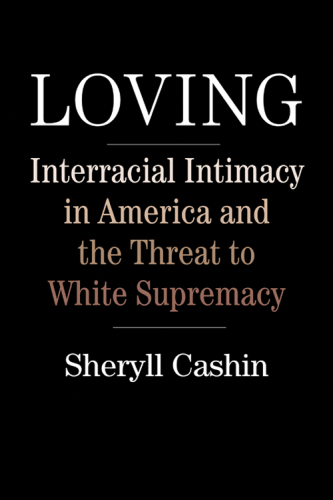
Loving
Interracial Intimacy in America and the Threat to White Supremacy
کتاب های مرتبط
- اطلاعات
- نقد و بررسی
- دیدگاه کاربران
نقد و بررسی

May 1, 2017
A sobering look at the centrality of whiteness to the nation's founding and growth, both before and after Loving v. Virginia, the significant 1967 Supreme Court case.Cashin (Law/Georgetown Univ.; Place, Not Race: A New Vision of Opportunity in America, 2014, etc.) walks readers through the history of interracial marriage in the United States--i.e., the long legal restrictions to it until the court case of Richard and Mildred Loving challenged enduring strictures of white supremacy in the wake of civil rights legislature in the 1960s. In striking down Virginia's long ban on interracial marriage, Chief Justice Earl Warren specifically cited the ban as "designed to maintain White Supremacy," enforced by strict racial separation. In the first part of the book, "Before Loving, 1607-1939," Cashin looks at early examples of "amalgamation," such as John Rolfe's marriage to Pocahontas, rationalized as a "patriotic, even sacrificial act for the good of the [Jamestown] colony." In addition, bonding between indentured servants and African slaves began to threaten the planter class, and new restrictions on interracial sex passed in Virginia--e.g., a mandate that children fathered by Englishmen with a black woman take the mother's status--became the model code in other states. Slavery henceforth "helped propagate supremacist thinking," and slave-owning Founding Fathers were fraught by mind-bending contradictions about "black inferiority" while engaging in sexual relationships with black slaves--e.g., Thomas Jefferson. After Cashin chronicles the Loving case, she delineates the vast cultural changes that have occurred over the last decades in rendering people--young people, mixed-race couples, progressives--more "dexterous" in their navigation of interracial trust and resisting arguments of white supremacy. Moreover, she notes how the Loving case inspired the fight to legalize same-sex marriage. Finally, Cashin looks beyond the current "state of toxic polarity" and speculates on what propels and nourishes interracial intimacy and inclusion. A concise, powerful reflection on the 50th anniversary of the landmark case.
COPYRIGHT(2017) Kirkus Reviews, ALL RIGHTS RESERVED.

























دیدگاه کاربران